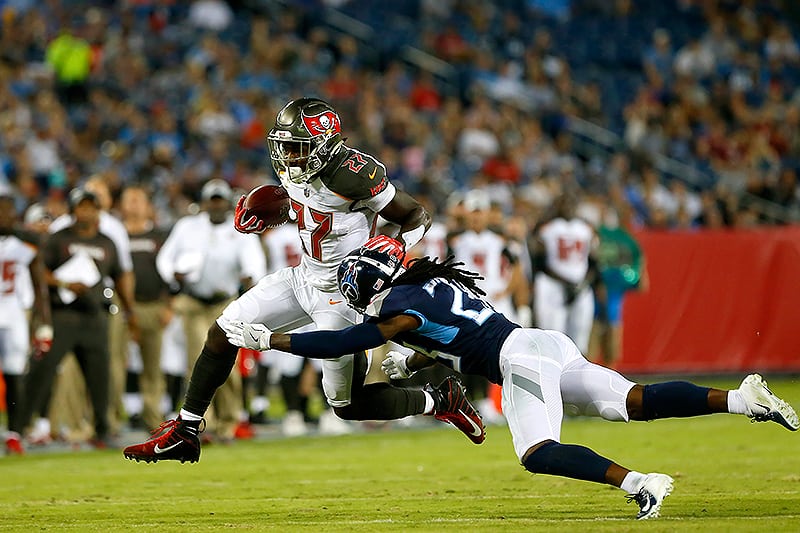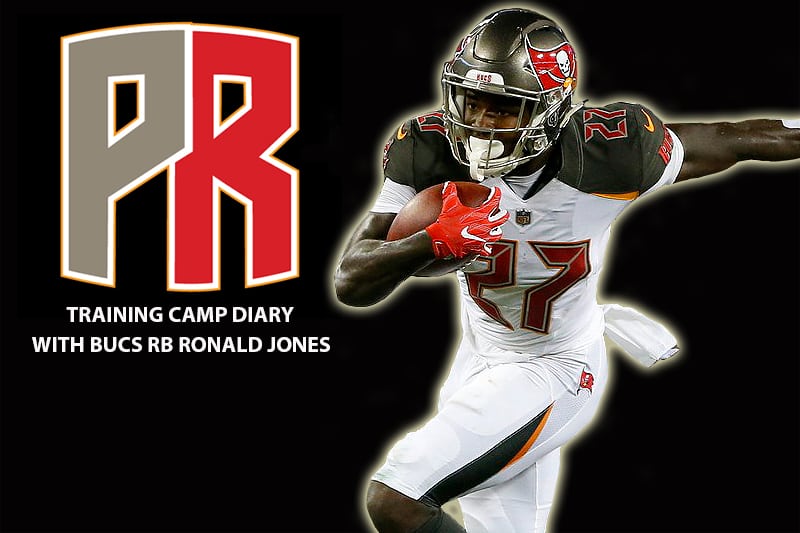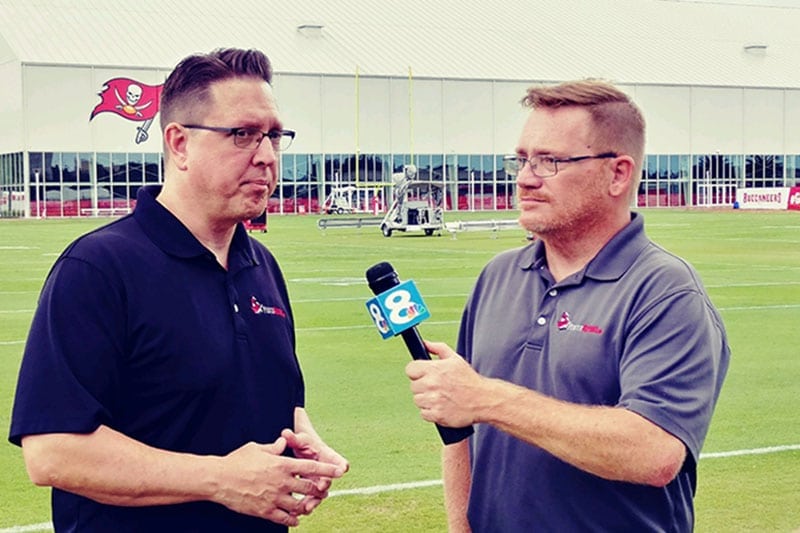Sikkema’s Stat of the Week
Do you know why the teams picking at the top of the NFL Draft actually pick at the top of the NFL draft?
It’s because they stink.
Something isn’t good. Whether it’s the offense, the defense, the overall talent, the coaching, the culture, etc. Whatever it is, something’s not right, and the team just isn’t good.
For the Tampa Bay Buccaneers, there were a handful of reasons why they were picking No. 7 overall in the 2018 NFL Draft, but one of them was certainly the running game. Tampa Bay ranked just 27th in the league in rushing in 2017 with only 1,450 rushing yards on the year. The team’s 3.7 rushing yards per attempt also ranked 27th in the league, and its eight rushing touchdowns were tied for 25th. Oh, and to make matters even worse, the longest rushing touchdown of the season for the Buccaneers was two yards.
So, how were the Buccaneers going to solve this problem?
The running back market in free agency wasn’t too great in 2017. Once Le’Veon Bell was given the franchise tag by the Pittsburgh Steelers, it became almost a preference pool. The Bucs showed interest in running back Jerrick McKinnon, but once his price tag got way too high, they bowed out. They watched as backs like Dion Lewis, Carlos Hyde and Isaiah Crowell all signed elsewhere, and once that happened, it was clear the Bucs focus was on the draft.
After missing out on Dalvin Cook in 2017 (who we know they almost traded up in the second round to get), the question was how heavily – how soon – the Bucs were going to emphasize picking up a running back in 2018. Penn State’s Saquon Barkley was the prized back in the class, but him making it to No. 7 overall wasn’t likely. Plus, picking a running back early is always a risk of value.
Ok, so maybe not with No. 7 overall, but what about with their second round pick, No. 38 overall? It was high in the round and the class was deep at the position. That made the most sense, and that turned out to be the sweet spot as the Buccaneers selected Ronald Jones II out of USC.
Jones rushed for over 1,500 yards in his final season at USC with an average of 5.9 yards per carry. Jones had a highlight reel full of long runs during his career as a Trojan, and selecting him to not only bring more talent but also dynamic ability for long runs to the Buccaneers seemed like a perfect fit.
But, here we are a month into practice and two weeks into the preseason and Jones has just 11 yards on 12 carries with too many bad practice reps in pass protection and in the receiving game to show for it.
With highlights like the ones Barkley, Derrius Guice (before he got hurt) and Nick Chubb have put on around the league in the preseason, and with the memory of last year’s failure, Jeremy McNichols, in mind, the question has started to creep into our mentions and comment sections, asking if the Bucs picked the wrong guy or just made the wrong choice picking a running back.
Let’s tackle the latter half of that question first.
According to some handy stats from Joel, a contributor of SB Nation’ Arrowhead Pride Kansas City Chiefs blog, if you want a running back to become a starter for your team, you better pick him early.
“The position has been devalued over the years but the statistics still show that it is better to draft early if you are looking for a starter.
- Of the 207 players drafted, 33 have become starters for half their careers. This gives an indication that there is a lot of Running Back By Committee (RBBC).
- There is a very high bust rate for RBs. The first round gives you a 58% chance of finding a starter followed by 25% in the second, 16% in the third, 11% in the fourth, 9% in the fifth, 6% in the sixth and 0% in the 7th.
- If you rank the rounds by the total RBs drafted you find that the greatest number are drafted in the 7th, followed by the 4th, 6th, 2nd, 3rd, 1st, and 5th.
If you want a stud RB, they are likely to come from the first round. If you are looking for depth, the fourth round seems to be the place to go.”
OK, so it seems the Bucs did the right thing investing at least one of their picks in the first two rounds on a running back, and since the stats clearly point towards early picks being more successful (duh), it seems the Bucs also appropriately selected one with their first second round pick (the highest one).
So, if the talent risk was correct, what about the financial risk? Did that line up optimally as well?
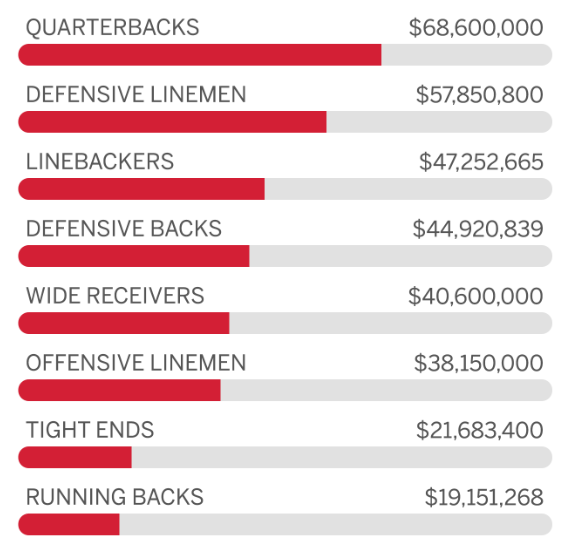
(numbers up to 2017, via ESPN)
In an article written by Kevin Seifert of ESPN, running backs are given some of the least amount of money when it comes to the average guaranteed money for the five highest-paid players at each position. With that $19.2 million in mind, remember the guarantees given to guys like Ezekiel Elliott ($24.96 million in 2016), Todd Gurley ($13.82 million in 2015) and Saquon Barkley ($20.76 million in 2018).
So, yes, there is a higher starter rate of success, but the amount you’re having to pay for it is very high. Instead, look at the numbers for running backs drafted a tad lower.
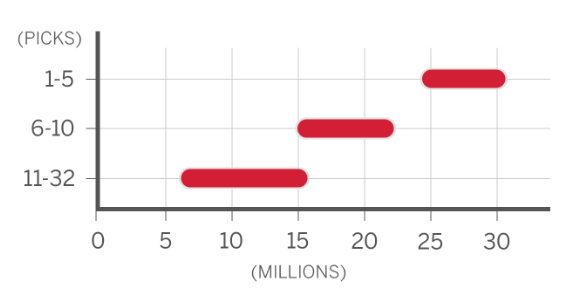
(numbers up to 2017, via ESPN)
As you can see by the chart a above, running backs drafted outside of the Top 32 are guaranteed only 25 or less percent of what guys are guaranteed that are picked in the top half of the draft. When you combine that with the fact that the starting back success rate is only half when going from rounds 1 to 2, the top of the second round also seems like the sweet spot financially to get the most bang for your buck, especially in a stack running back class, which 2018 was.
Finally, let’s take a look at age, which is without a doubt a metric in the draft process when determining value of selection.
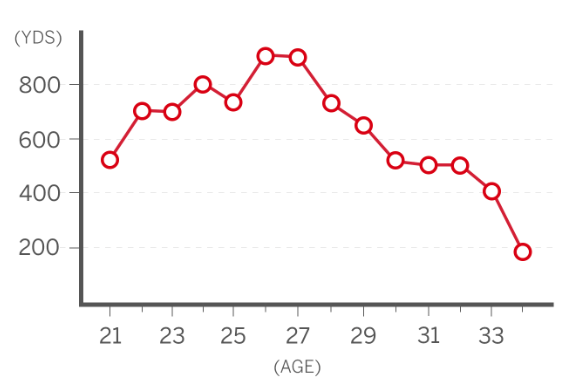
(numbers up to 2017, via ESPN)
Jones was one of the youngest players in the entire draft class at just 20 years old on draft night. As you can see from the chart above, young running backs don’t even enter their best years, on average, until they’re between the ages of 23-25. That, too, lent itself to the selection of Jones being correct in its nature.
So, from the type of prospect he was as a dynamic back to the kind of production he has to where he was selected, with financial and age averages involved, Jones really did seem like the perfect pick for the Bucs, as a player and where he was chosen.
So, to answer part one of our question, no, the Bucs did not make a mistake taking a running back where they did in 2018. All signs point to that part being spot on for them. Now he has to produce.
As for the second part of the question, we answer that on the next page.
Trevor Sikkema is the Tampa Bay Buccaneers beat reporter and NFL Draft analyst for PewterReport.com. Sikkema, an alumnus of the University of Florida, has covered both college and professional football for much of his career. As a native of the Sunshine State, when he's not buried in social media, Sikkema can be found out and active, attempting to be the best athlete he never was. Sikkema can be reached at: [email protected]

